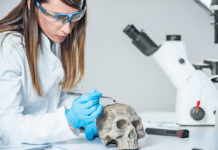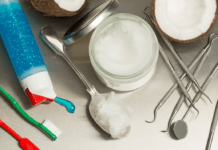If there’s one thing dental patients hate more than fillings and root canals, it’s needles. The anxiety associated with receiving a shot at their dental appointment is one of the most common reasons patients cite for their fear of the dentist.
Unfortunately, there have not been many options for providing local anesthesia that did not require a shot in the mouth, until now. While there is still no way to eliminate the need for dental needles completely, there is now an alternative to them when treating the upper anterior teeth. That alternative comes in the form of Kovanaze®, a topical nasal spray that provides pulpal anesthesia to teeth 4-13. It anesthetizes the anterior maxillary teeth simply by spraying the medication into the patient’s nose. This innovative approach can save patients from enduring numerous injections. It might also greatly reduce an anxious patient’s fear in the process.
In the summer of 2016, The Food and Drug Administration approved Kovanaze® for dental anesthesia use1. It is a combination of Tetracaine, a nerve blocking anesthetic, and Oxymetazoline, a vasoconstrictor. Tetracaine has long been used for nasal procedures by physicians, during which, patients reported their teeth felt numb from it2. This led to the development of a dental application for Tetracaine2.
Almost ten years ago, the pharmaceutical company St. Renatus developed Kovanaze® by adding the vasoconstrictor Oxymetazoline and therefore improving the efficacy enough to perform dental restorations with effective pulpal anesthesia. Since then, three double-blind studies were conducted in which effective anesthesia was achieved 84% of the time for teeth 4-13, and 96% of the time for teeth 5-123. Basically, the maxillary second premolars have a less reliable response to the Kovanaze® than the first premolars and anterior teeth.
Kovanaze® is administered by spraying into the nostril which is on the same side of the mouth that requires the anesthetic. Two sprays are administered about four minutes apart4. It is classified as an Intranasal Topical Anesthetic. The laws regarding whether dental hygienists are allowed to administer this type of anesthetic, and under what type of supervision, differ by state. Because it is a fairly new product, hygienists should check with their state’s dental board for administration laws.
In addition to providing needleless anesthesia for upper anterior restorations, one of the greatest benefits may be what Kovanaze® doesn’t anesthetize. The anesthetic action provided by Kovanaze®, unlike injectable anesthetics, does not include the upper lip. This could be a very valuable factor for dentists performing anterior cosmetic restorations. When injectable local anesthetics are used, it can be very difficult for the dentist to get a precise, cosmetically pleasing, result because the patient is unable to move their lips and smile in a natural way. This can hinder the preparation of, and correct placement of, veneers and crowns. With Kovanaze®, natural movement is preserved, and restorative placement can be more accurate thus improving patient satisfaction.
There are a few drawbacks to Kovanaze®; one is the obvious limitation to only the maxillary anterior and premolars. Injections are still necessary for restorative work on all other teeth in the mouth. Also, like other local anesthetics, there are contraindications for use. Patients with uncontrolled hypertension, thyroid disease, and children under 88 lbs, and patients taking MAOI’s should not be given Kovanaze®4. A full list of usage instructions and contraindications can be found on the Kovanaze website.
As far as dental hygiene application goes, Kovanaze® may have limited use for scaling and root planing or other dental hygiene procedures due to unpredictable gingival anesthesia. Further testing needs to be conducted to determine the efficacy of dental hygiene procedures.
Regardless of whether we can use it for dental hygiene purposes or not, I still think this is an exciting and innovative development in the realm of local anesthesia. Any advancement which allows us, as dental practitioners, to alleviate patient pain and anxiety regarding dental procedures should be celebrated. In addition, I’m sure patients will embrace the chance to skip the dental needle!
NOW READ: How to Get the Perfect Anesthesia Injection
DON’T MISS: Ask Kara RDH: Anxiety Giving Local Anesthetic
References
- “New Intranasally Administered, Needleless Dental Anesthetic Approved by the U.S. Food and Drug Administration.” ada.org, ADA Science Institute, 15 July 2016, www.ada.org/en/science-research/science-in-the-news/new-intransally-administered-needleless-dental-anesthetic-approved-by-the-us-fda.
- Malamed, Stanely. Handbook of Local Anesthesia, Mosby. 6th Edition, 2013.
- Cohen, Andrew. “Should Dentists Use Kovanase Nasal Spray?” Spear Education, 13 Sept. 2016, speareducation.com/spear-review/2016/09/should-dentists-use-kovanaze-nasal-spray.
- “Kovanaze Information Pamphlet.” Kovanaze, St. Renatus, LLC, www.kovanaze.com/kovanaze-needle-free-anesthesia-mist/.












